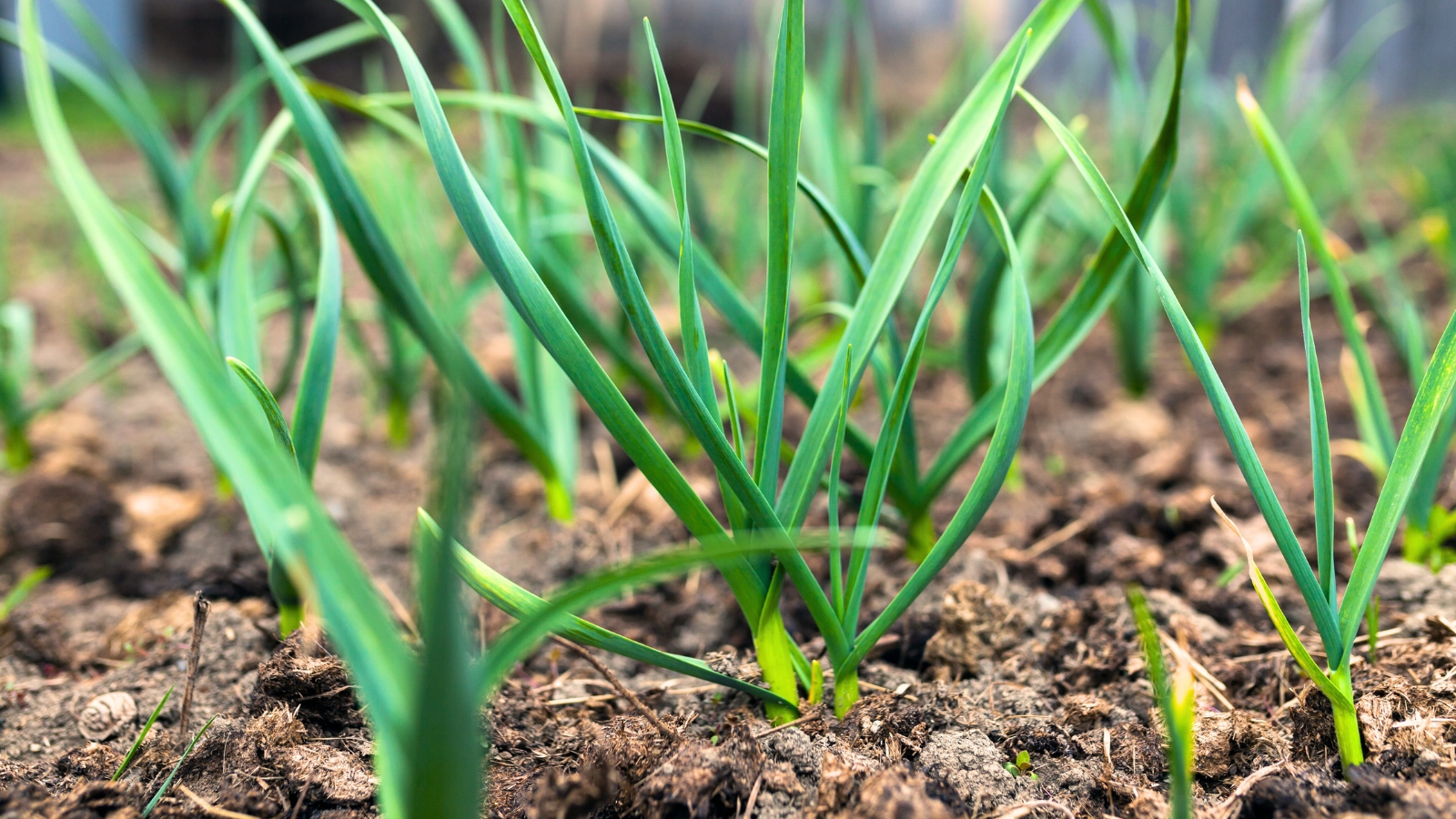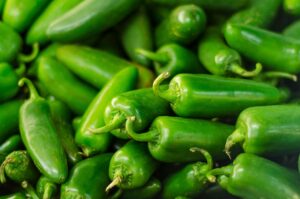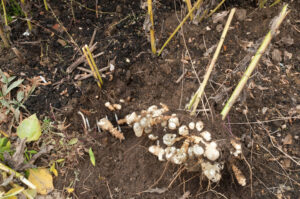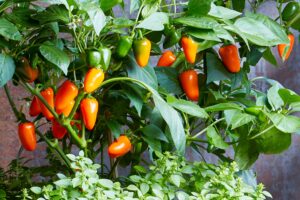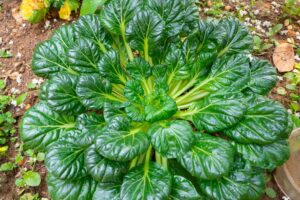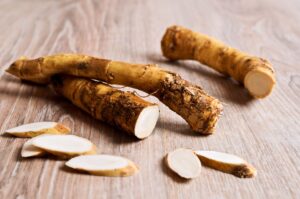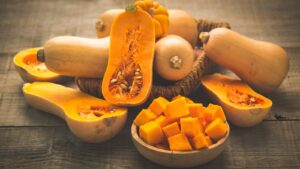How to Grow Garlic: A Complete Guide for Home Gardeners
Garlic is one of the most rewarding crops you can grow at home. With its rich flavor profile and numerous health benefits, growing your own garlic allows you to enjoy fresher, more flavorful bulbs than what you’ll find in stores. Plus, garlic is relatively easy to grow and requires minimal maintenance once established. This guide will walk you through everything you need to know about planting garlic in your home garden, backyard plot, or even in containers.
Understanding Garlic Varieties
Before you start planting garlic, it’s important to understand the different varieties available. Garlic falls into two main categories: hardneck and softneck.
Hardneck Garlic (Allium sativum var. ophioscorodon)
Hardneck varieties produce a rigid flowering stalk (called a “scape”) and typically have fewer but larger cloves per bulb. They’re known for their complex flavors and are particularly well-suited to colder climates.
Popular hardneck varieties include:
- Rocambole: Rich, full-bodied flavor with easy-to-peel cloves
- Purple Stripe: Sweet, medium-hot flavor that caramelizes well when roasted
- Porcelain: Large cloves with strong flavor and excellent storage potential
Softneck Garlic (Allium sativum var. sativum)
Softneck varieties are what you’ll typically find in grocery stores. They have flexible necks that can be braided, more cloves per bulb (though often smaller), and generally store longer than hardneck types.
Popular softneck varieties include:
- Artichoke: Mild flavor with many cloves in layers
- Silverskin: Very adaptable, excellent storage life, mild to medium flavor
According to the USDA National Agricultural Statistics Service, garlic production in the US reached approximately 400 million pounds annually, with California producing about 90% of the commercial crop. However, home gardening of garlic has been steadily increasing across all regions. For more information on garlic varieties and their adaptability to different regions, visit the USDA Plant Hardiness Zone Map.
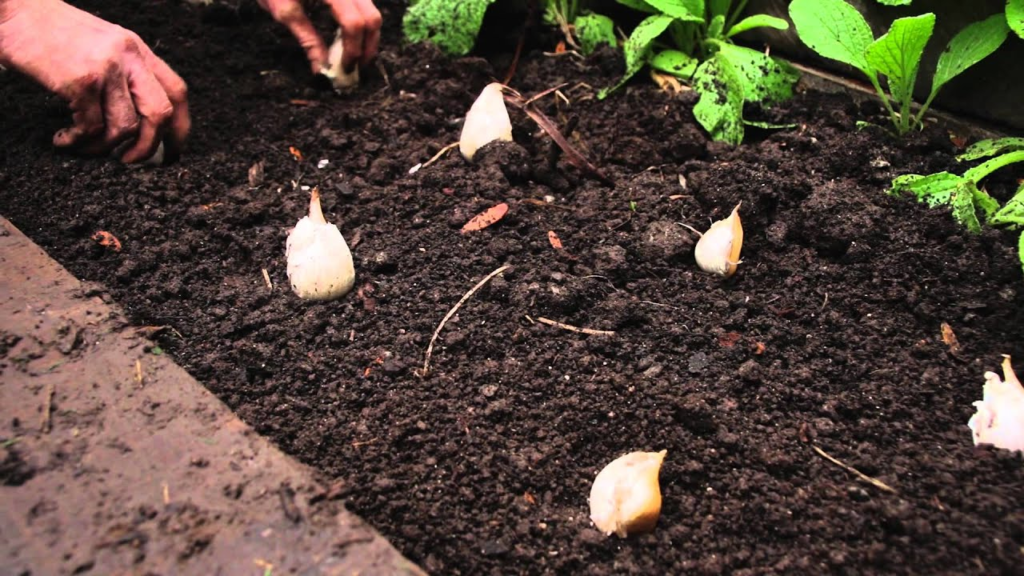
When to Plant Garlic
Timing is crucial for successful garlic cultivation. Unlike most vegetables, garlic is planted in fall for harvest the following summer.
| Climate Region | Ideal Planting Time | Expected Harvest Time | Average Yield per Clove |
|---|---|---|---|
| Northern US (Zones 3-5) | Late September to early October | July-August | 1 bulb with 4-7 cloves |
| Central US (Zones 5-7) | Mid-October to early November | June-July | 1 bulb with 8-12 cloves |
| Southern US (Zones 8-10) | Late October to December | May-June | 1 bulb with 10-15 cloves |
Fall planting gives the garlic time to develop strong roots before winter dormancy, resulting in larger, more flavorful bulbs. In very mild winter areas (zones 9-10), you can also plant in early spring, though bulbs may be smaller.
How to Plant Garlic at Home (Indoor and Container Growing)
If you have limited outdoor space, you can still grow garlic successfully in containers.
Container Requirements
- Choose a pot at least 8 inches deep with drainage holes
- Use a high-quality potting mix with added compost
- Place in a location that receives at least 6 hours of sunlight daily
Planting Steps for Indoor Garlic
- Prepare your container – Fill with potting soil mixed with compost, leaving about 1 inch from the top.
- Select and prepare cloves – Choose large, healthy cloves from grocery store garlic or, better yet, seed garlic from a nursery. Remove the papery outer covering but keep the tight skin on the individual cloves.
- Plant cloves properly – Place cloves 2 inches apart and 2 inches deep, with the pointed end facing upward.
- Water thoroughly – Moisten the soil but avoid waterlogging.
- Place in appropriate location – A sunny windowsill or under grow lights works well.
Indoor garlic plants may not produce full-sized bulbs but will provide flavorful garlic greens (similar to scallions) that you can harvest repeatedly.
How to Plant Garlic in Your Garden
Garden planting allows garlic to reach its full potential. Here’s how to plant garlic in a traditional garden setting:
Soil Preparation
Garlic thrives in well-drained, fertile soil with plenty of organic matter. According to the USDA Agricultural Research Service, garlic prefers a soil pH between 6.0 and 7.0.
- Test your soil – Use a home test kit or contact your local extension office for testing services.
- Amend as needed – Add compost and aged manure to improve soil structure and fertility.
- Prepare the bed – Loosen soil to a depth of at least 8 inches, removing rocks and breaking up clumps.
Planting Process
- Break apart the bulb – Separate cloves carefully without damaging them.
- Select the best cloves – Choose the largest, firmest cloves for planting. Small or damaged cloves can still be used for cooking.
- Plant at proper depth and spacing – Plant cloves 2 inches deep, pointed end up, with 4-6 inches between cloves and 12-18 inches between rows.
- Mulch the bed – Apply 2-4 inches of straw, shredded leaves, or grass clippings to protect plants during winter.
Special Considerations for Different Garden Sizes
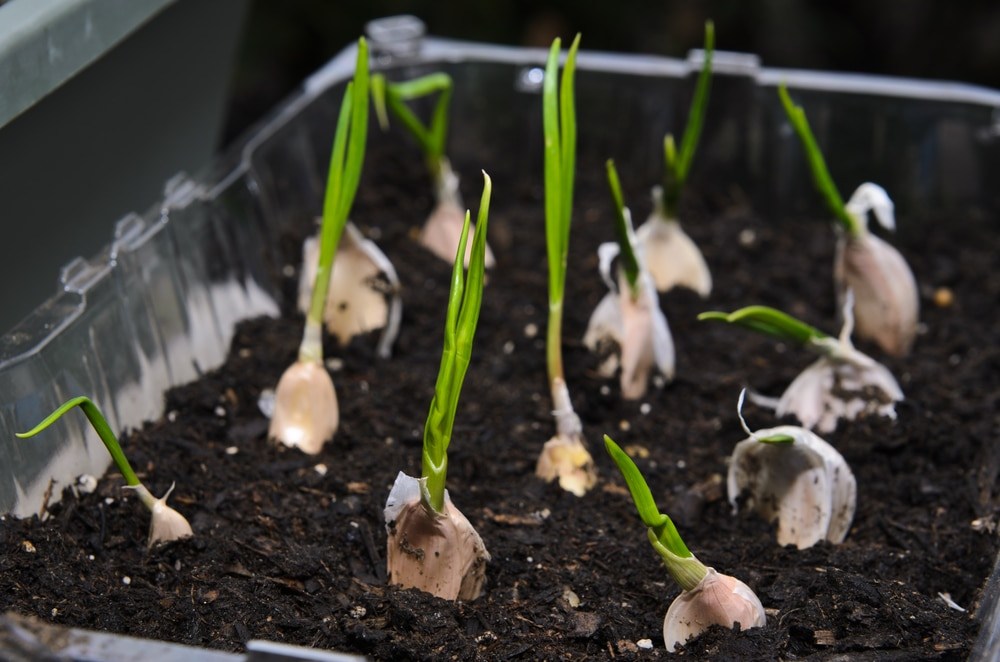
Small Home Gardens (Under 100 sq ft)
- Focus on high-yielding varieties
- Plant in raised beds to maximize space efficiency
- Consider interplanting with compatible crops like lettuce or spinach
Medium Gardens (100-500 sq ft)
- Dedicate a specific bed to alliums (garlic, onions, leeks)
- Implement crop rotation to prevent soil-borne diseases
- Try different varieties to extend harvest season
Large Plot Gardens (Over 500 sq ft)
- Plant multiple varieties for different culinary uses
- Consider succession planting for continuous harvest
- Use cover crops in rotation with garlic to improve soil health
How to Plant Garlic in a Market Plot
If you’re considering growing garlic commercially for farmer’s markets or local restaurants, the approach differs slightly:
Site Selection and Preparation
- Choose the right location – Select a site with full sun and good air circulation to prevent fungal diseases.
- Soil testing – Conduct comprehensive soil tests and amend accordingly. Garlic is a heavy feeder and benefits from soil rich in phosphorus and potassium.
- Prepare raised beds – For commercial production, raised beds (4-6 inches high, 30-36 inches wide) improve drainage and soil warming.
Planting for Commercial Scale
- Source quality seed garlic – Purchase certified disease-free seed garlic from reputable suppliers. The USDA National Organic Program provides resources for organic seed sources.
- Mechanization considerations – For plots larger than 1/4 acre, consider simple mechanical planters to save time.
- Plant in blocks by variety – Keep varieties separated and clearly labeled to track performance.
- Irrigation setup – Install drip irrigation for water conservation and disease prevention.
Caring for Your Garlic Plants
Regardless of where you plant your garlic, proper care is essential for a bountiful harvest.
Watering Requirements
- Water deeply but infrequently, allowing soil to dry slightly between waterings
- Reduce watering when plants begin to mature (when lower leaves start yellowing)
- Avoid overhead watering to prevent fungal diseases
Fertilization Schedule
- Apply a balanced organic fertilizer in early spring when growth resumes
- Side-dress with compost or a nitrogen-rich fertilizer when plants are about 6 inches tall
- Stop fertilizing about 3-4 weeks before anticipated harvest
Pest and Disease Management
Garlic is naturally pest-resistant, but a few issues can arise:
- Onion maggots: Rotate crops and use row covers
- Nematodes: Practice crop rotation and solarize soil if necessary
- White rot: A serious fungal disease; avoid planting in affected areas for at least 10 years
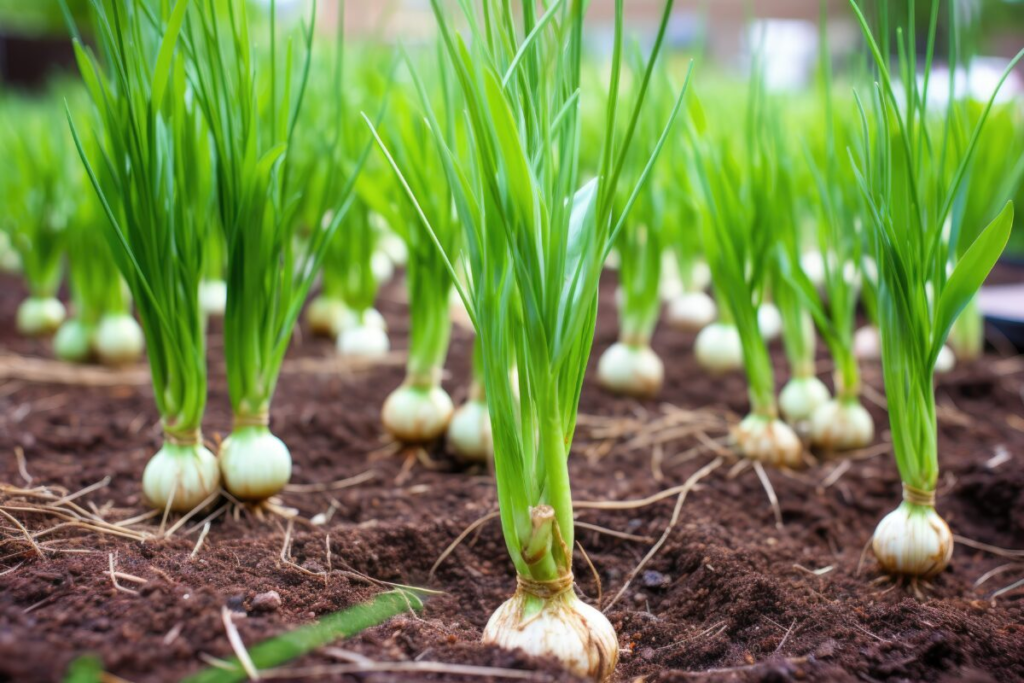
Harvesting Your Garlic
Knowing when and how to harvest is crucial for quality bulbs.
Harvest Timing
Harvest when the lower 1/3 to 1/2 of the leaves have turned brown, typically:
- Southern regions: May-June
- Central regions: June-July
- Northern regions: July-August
Proper Harvesting Technique
- Loosen soil gently with a garden fork
- Pull plants carefully, keeping stems attached
- Handle bulbs delicately to prevent bruising
Curing and Storage
- Brush off excess soil (don’t wash bulbs)
- Hang in bundles or lay on screens in a dry, well-ventilated area for 2-3 weeks
- Once cured, trim roots and cut stems to about 1 inch (or leave long for braiding softneck varieties)
- Store in mesh bags in a cool, dry place (ideal conditions: 50-60°F with 45-55% humidity)
The US Garlic Market: Growing for Profit
The US garlic market offers opportunities for small-scale growers. While California dominates commercial production, local and specialty garlic has seen increasing demand at farmers’ markets and through CSA programs.
Market Opportunities
- Farmers’ markets: Fresh garlic and garlic products command premium prices
- Restaurant sales: Chefs value unique varieties and freshness
- Value-added products: Consider garlic braids, black garlic, or garlic powder
According to the USDA Economic Research Service, specialty garlic varieties can sell for $15-25 per pound at farmers’ markets, compared to $3-5 per pound for conventional garlic in stores.
Conclusion
Whether you’re planting a few cloves in containers, establishing a home garden bed, or planning a market plot, growing your own garlic is a rewarding endeavor. By following the guidelines in this article, you’ll be well on your way to harvesting flavorful, homegrown garlic that outshines anything you can buy in stores. Remember that garlic isn’t just a culinary staple—it’s also a beautiful, low-maintenance plant that deters many garden pests while providing amazing flavor and health benefits.
Start with quality seed garlic, plant at the right time for your region, and provide proper care throughout the growing season. Before long, you’ll be enjoying the fruits of your labor in countless delicious dishes.
